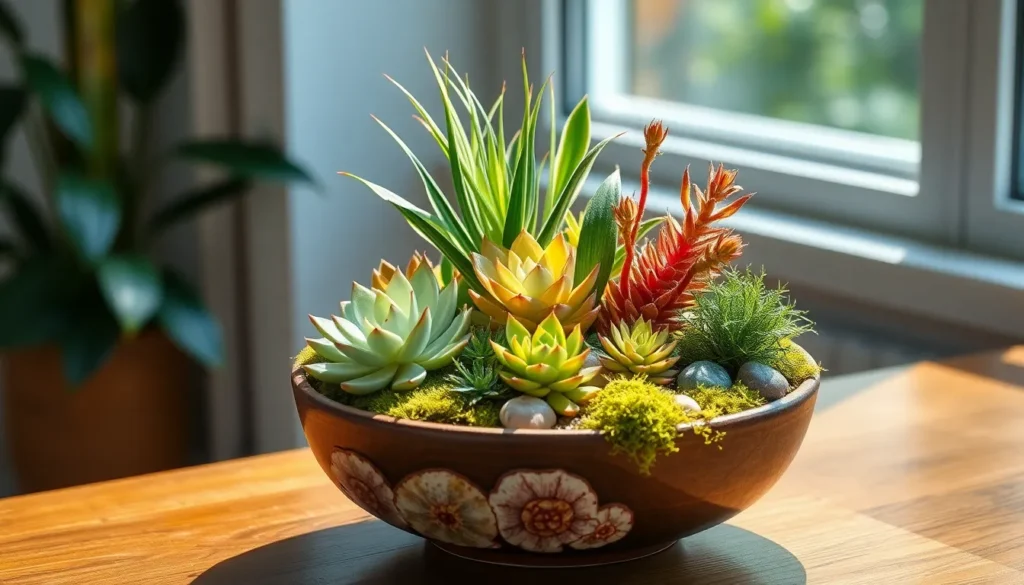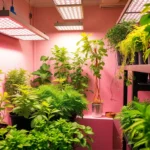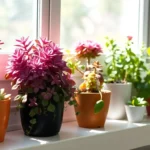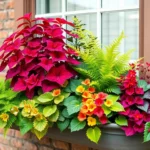We’ve all dreamed of having a beautiful garden but felt limited by space or outdoor conditions. That’s where dish gardens come to the rescue – these miniature landscapes bring nature’s beauty directly into our homes while requiring minimal space and maintenance.
Dish gardens offer endless creative possibilities for plant lovers who want to express their green thumb indoors. Whether we’re working with succulents that thrive on neglect or tropical plants that create lush miniature jungles we can transform any shallow container into a stunning living centerpiece.
The best part? We don’t need extensive gardening experience to create these captivating displays. With the right plant combinations and basic care knowledge we can design dish gardens that complement our home décor while providing the therapeutic benefits of gardening year-round.
Understanding Dish Gardens: A Beginner’s Guide to Miniature Plant Landscapes
We create dish gardens as contained ecosystems that bring the beauty of outdoor landscapes into our homes. These living displays offer us the perfect opportunity to practice miniature gardening techniques while developing our green thumb skills.
What Makes a Perfect Dish Garden Container
Drainage capacity determines the success of our dish garden more than any other container feature. Containers without drainage holes require us to add a drainage layer using pebbles, activated charcoal, or gravel to prevent root rot and water accumulation.
Size considerations play a crucial role in plant selection and arrangement possibilities. Shallow containers measuring 2-4 inches deep work best for succulents and cacti, while deeper dishes of 6-8 inches accommodate plants with more extensive root systems like ferns and small tropical varieties.
Material choices affect both aesthetics and plant health in our miniature landscapes. Ceramic and terra cotta containers provide excellent breathability for roots, glass vessels create stunning visual displays but require careful watering, and wooden containers offer natural charm while needing proper sealing to prevent water damage.
Shape versatility opens creative possibilities for our dish garden designs. Round containers work well for symmetrical arrangements, rectangular dishes accommodate linear plantings like herb gardens, and irregular shaped vessels allow us to create naturalistic industry scenes.
Essential Tools and Materials for Success
Basic gardening tools streamline our dish garden creation and maintenance process. Small hand trowels help us plant in tight spaces, tweezers allow precise placement of tiny plants, and spray bottles provide gentle watering for delicate seedlings.
Soil components form the foundation of healthy dish garden ecosystems. Potting mix serves as our base medium, perlite improves drainage and aeration, and specialized cactus soil works perfectly for succulent arrangements.
Decorative elements transform our plant containers into miniature worlds. Natural materials like river rocks, moss, and driftwood create realistic landscapes, while decorative stones, colored sand, and miniature figurines add whimsical touches to themed gardens.
Maintenance supplies keep our dish gardens thriving throughout the seasons. Small scissors trim overgrown plants, soft brushes clean dust from leaves, and liquid fertilizer provides nutrients during growing seasons.
Selecting the Right Plants for Your Dish Garden Ideas
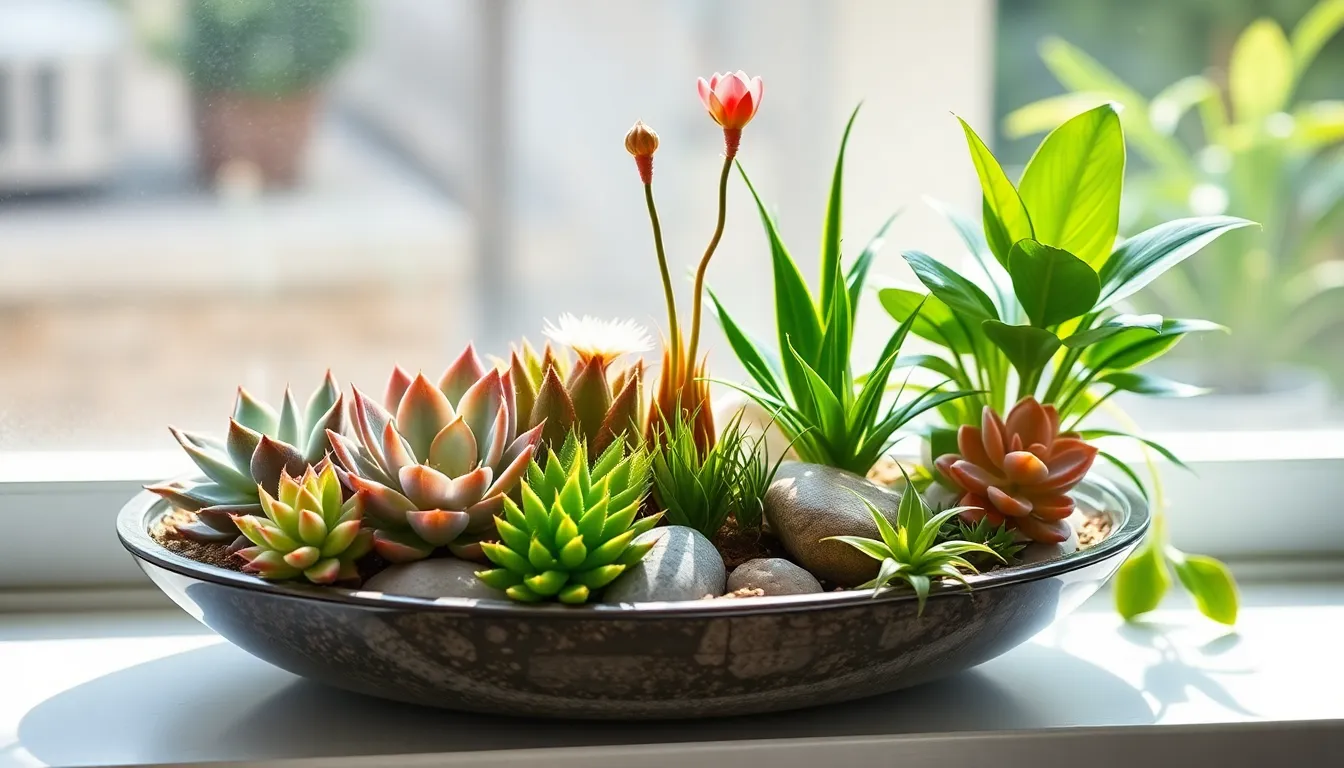
We need to carefully consider which plants will thrive together in our confined container environment. Success depends on choosing plants with similar care requirements that complement each other visually while adapting well to limited space conditions.
Low-Maintenance Succulents That Thrive in Small Spaces
Succulents rank among the most popular choices for dish gardens because they require minimal care and showcase striking shapes and colors. These drought-tolerant plants thrive in well-draining soil or gravel and need infrequent watering, making them perfect for beginners or busy lifestyles. We can create stunning succulent-only dish gardens that brighten windowsills with unique leaf forms and vibrant hues. Varieties like echeveria, jade plants, and string of pearls offer diverse textures while maintaining similar care needs. Their compact size allows us to combine multiple species without overcrowding our containers.
Tropical Plants That Add Lush Green Appeal
Tropical plants bring lush greenery and diverse textures to our dish garden compositions, creating the feel of a mini indoor forest. False aralia, rex begonia, philodendron, and peace lilies provide excellent options for adding height and colorful accents to our arrangements. These plants typically prefer partial shade and moderate watering, making them manageable for indoor environments. We can combine different leaf shapes and sizes to create visual depth while maintaining the tropical theme. Their preference for consistent moisture levels means we’ll need to group them separately from drought-loving plants like succulents.
Air Plants for Unique Vertical Interest
Air plants (Tillandsia) offer exceptional versatility for adding vertical interest and artistic flair to our dish gardens. These unique plants don’t require soil and absorb moisture and nutrients through their leaves, allowing for creative mounting on wood or placement among decorative stones. We can position them at various heights to create ever-changing arrangements that draw the eye upward. They need bright, indirect light and occasional misting, integrating seamlessly with other small container plants. Their sculptural forms and silver-green foliage provide textural contrast when combined with traditional potted plants in our dish garden designs.
Creating Desert-Themed Dish Garden Ideas Plants
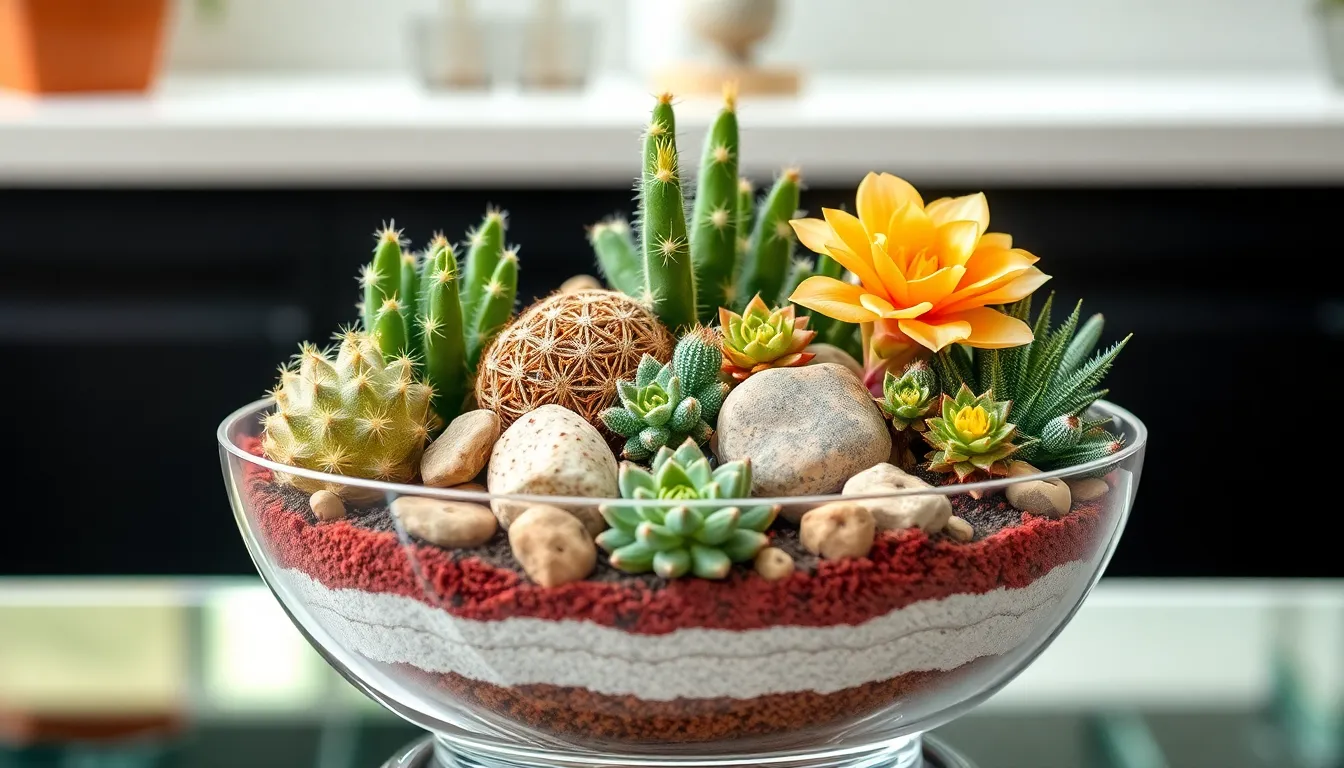
Desert-themed dish gardens bring the striking beauty of arid landscapes indoors with drought-tolerant plants and natural materials. We’ll explore how to create these low-maintenance miniature ecosystems that thrive with minimal care.
Combining Cacti and Succulents for Stunning Contrast
Combining different types of cacti and succulents creates visual interest while mimicking natural desert diversity. We use euphorbias to represent towering saguaros, positioning haworthias and aloes as substitute agaves throughout our arrangements. Smaller succulents work perfectly as desert flowers or groundcover elements that fill empty spaces.
Varying plant heights adds authentic dimension to our desert displays. We place tall, bold yuccas or aloe trees at the back, then arrange medium-sized golden barrels in the middle section. Smaller agaves and compact succulents fill the foreground to create natural layering that replicates actual desert landscapes.
Creative layering becomes possible since succulents don’t require deep planting. We can experiment with different elevations and arrangements without worrying about root depth requirements. This flexibility allows us to design more ever-changing compositions that showcase each plant’s unique characteristics.
Incorporating drought-tolerant flowering plants enhances seasonal appeal beyond traditional cacti selections. Desert roses, desert marigolds, and lavender varieties provide colorful blooms that complement succulent textures. These flowering additions create stunning contrast against the architectural forms of cacti and geometric patterns of rosette succulents.
Adding Decorative Stones and Sand for Authentic Appeal
Decorative stones and gravel simulate the rocky, arid soils found in natural desert environments. We spread these materials across the soil surface to retain moisture while adding natural texture and visual interest. Different stone sizes create depth and prevent the flat appearance that plain soil often produces.
Colored sand layers mimic desert dune landscapes when strategically placed throughout our arrangements. We can create gentle waves or distinct color bands that evoke the Southwest’s painted desert regions. This technique works especially well in clear glass containers where the sand layers remain visible from multiple angles.
| Material Type | Function | Visual Benefit |
|---|---|---|
| River rocks | Drainage and texture | Natural color variation |
| Colored sand | Layering and contrast | Mimics desert dunes |
| Crushed granite | Soil coverage | Authentic desert feel |
| Pea gravel | Moisture retention | Clean, minimalist look |
These materials prevent soil erosion while maintaining the clean, minimalistic impression that complements drought-tolerant plants’ sculptural appeal. We choose neutral tones like beige, gray, and rust that enhance rather than compete with our plant selections. The natural textures create an authentic desert atmosphere that transforms any indoor space into a captivating miniature industry.
Designing Woodland-Inspired Miniature Gardens
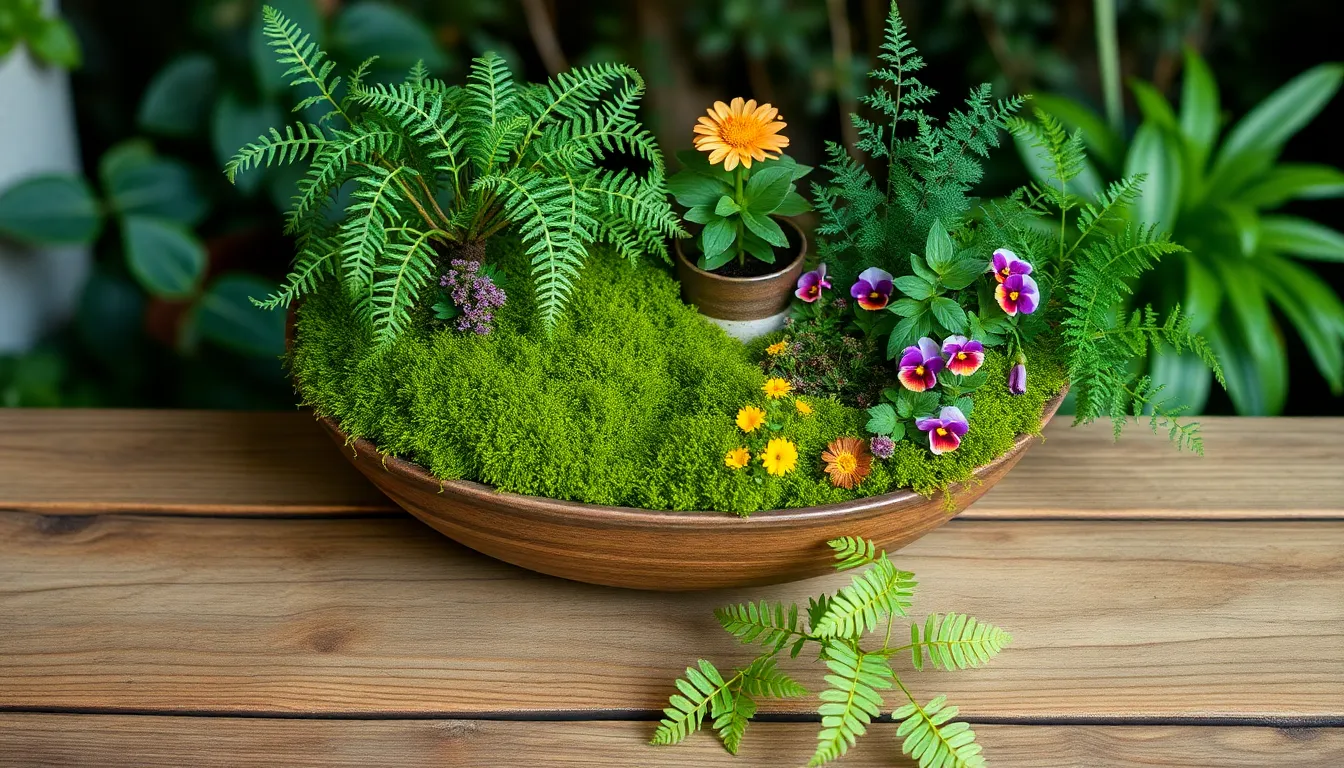
Woodland dish gardens capture the serene beauty of forest floors right in our homes. These miniature ecosystems combine natural textures and layered plantings to create enchanting displays that bring the outdoors inside.
Choosing Moss and Ferns for Natural Texture
Moss varieties transform dish gardens into lush, forest-like sanctuaries that require minimal maintenance. Cushion moss creates soft green carpets that serve as perfect foundations for woodland scenes, while haircap moss adds delicate vertical texture that mimics tiny forest undergrowth. We recommend using these moss types for desktop displays or coffee table gardens where their soothing green presence can be appreciated up close.
Ferns provide the essential backdrop foliage that every woodland garden needs to feel authentic. Boston ferns offer full, cascading fronds that create natural depth and movement within the confined space of a dish garden. Maidenhair ferns contribute delicate, lacy textures with their varied leaf shapes and subtle green gradations that catch light beautifully.
Combining moss and ferns creates the verdant foundation that makes dish gardens feel like genuine forest ecosystems. Position ferns as backdrop plants while using moss to fill spaces between larger specimens and create seamless ground cover. This pairing establishes the tranquil, natural atmosphere that defines successful woodland themed arrangements.
Incorporating Small Flowering Plants for Color Pops
Small flowering plants add essential color bursts that prevent woodland dish gardens from appearing too monochromatic. Pansies bring cheerful faces in purple, yellow, and white that complement the green backdrop without overwhelming delicate fern fronds. Petunias offer trumpet shaped blooms in vibrant colors that create focal points throughout the miniature industry.
Marigolds provide golden orange accents that warm up cool green moss and fern combinations. These flowering additions work particularly well as outdoor table centerpieces where their fragrance can be enjoyed alongside their visual appeal. Balance remains crucial when positioning flowering plants to ensure they enhance rather than dominate the natural woodland aesthetic.
Strategic placement of flowering plants creates visual interest while maintaining the garden’s natural feel. Use blooming specimens sparingly as accent pieces that draw the eye through the arrangement. Position them at varying heights to create the layered look found in actual forest clearings where wildflowers peek through moss covered logs and fern clusters.
Building Fairy Tale Dish Garden Ideas Plants
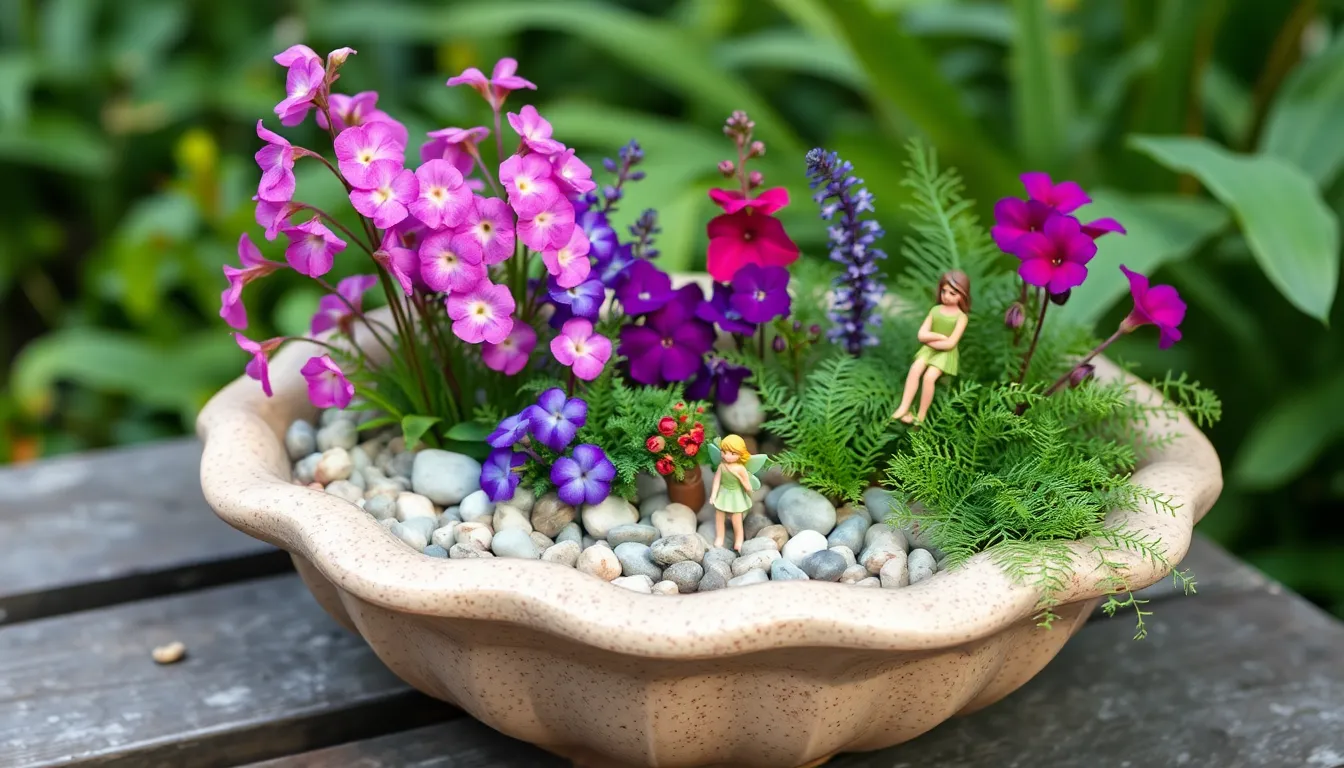
Creating magical fairy tale landscapes requires thoughtful plant selection and enchanting accessories that transport viewers into storybook worlds. We’ll guide you through choosing the perfect miniature plants and decorative elements to create your own captivating fairy garden.
Selecting Tiny Plants That Create Magical Landscapes
Snapdragons bring fantasy flair with their dragon-like blooms in vibrant colors that seem to dance in the breeze. These whimsical flowers add instant storybook charm while remaining compact enough for small containers.
Periwinkle creates magical appeal through small blue or purple flowers that appear almost otherworldly in their delicate beauty. We love how these cascading plants spill over container edges, creating natural fairy pathways.
Foxtail ferns mimic miniature cypress trees perfectly, providing essential woodland structure to fairy tale scenes. Their feathery texture adds depth and creates the illusion of ancient forest groves within your dish garden.
Fairy ferns offer tiny leaves that work exceptionally well in miniature landscapes, bringing authentic woodland floor textures. These delicate plants thrive in the controlled environment of dish gardens while maintaining their petite proportions.
Herbs like dill and globe basil provide both beauty and function with their feathery or topiary shapes. We can easily trim these plants to maintain perfect miniature scale while enjoying their aromatic qualities.
Native perennials such as blazing stars and penstemon deliver bursts of natural color that perfectly complement fairy tale themes. These plants bring authentic charm while requiring minimal maintenance in container settings.
Adding Miniature Accessories and Decorative Elements
Tiny pebbles and branch slices create natural fairy pathways that guide the eye through your miniature industry. We position these materials strategically to mimic authentic woodland trails and add structural interest.
Miniature flowerpots and containers serve as tiny planters that help organize the garden’s layout while adding charming details. These small vessels create visual layers and provide homes for the tiniest plants.
Small fairy figurines, benches, and lanterns enhance the fantasy atmosphere by bringing life to the scene. We carefully select accessories that match the scale of our plants to maintain realistic proportions throughout the garden.
Natural elements like moss, bark, and miniature bridges create authentic forest floor textures that complete the magical setting. These organic materials add depth and visual interest while connecting all garden elements into a cohesive fairy tale industry.
Maintaining Proper Drainage in Your Plant Arrangements

Creating beautiful dish gardens that thrive requires mastering the fundamentals of water management. We’ll explore proven techniques that keep your miniature landscapes healthy and vibrant through proper drainage systems.
Layering Techniques for Healthy Root Systems
Start with a foundation layer of rocks or horticulture charcoal at the bottom of your container before adding any soil. This drainage layer helps excess water exit the soil and prevents waterlogging that can suffocate plant roots.
Choose quality potting mix that matches your exact plants’ needs, incorporating sand for succulents or cacti, peat moss for tropical varieties, or standard potting soil for most flowering plants. The right soil composition creates an environment where roots can breathe and grow without restriction.
Remove compacted soil annually and replace it with fresh potting mix to sustain root health and prevent soil crusting that blocks water movement. This yearly refresh keeps your dish garden plants thriving with proper nutrient availability and drainage capacity.
Avoid using gravel directly at the bottom of containers without drainage holes, as this can actually hinder water movement rather than improve it. Instead, focus on creating proper soil layers that naturally help drainage throughout the growing medium.
Preventing Water Damage and Root Rot
Water dish gardens sparingly, typically about once a week using less than a cup of water for small containers, adjusting the frequency based on your exact plant types and environmental conditions. Most dish garden failures result from overwatering rather than underwatering.
Monitor soil moisture levels by inserting your finger about an inch into the soil before watering, ensuring the top layer has dried out completely. This simple test prevents the waterlogged conditions that lead to root rot and fungal problems.
Check and clean drainage holes at least twice a year during spring and fall maintenance sessions, removing any debris that might block water flow. Elevate containers slightly using pot feet or small blocks to prevent water from pooling underneath and causing freeze damage in colder seasons.
Improve drainage immediately when you notice water pooling on the soil surface by aerating compacted areas with a fork or chopstick. Position your containers where they receive adequate sunlight to enhance evaporation and natural drying of excess moisture throughout the day.
Seasonal Dish Garden Ideas Plants for Year-Round Beauty
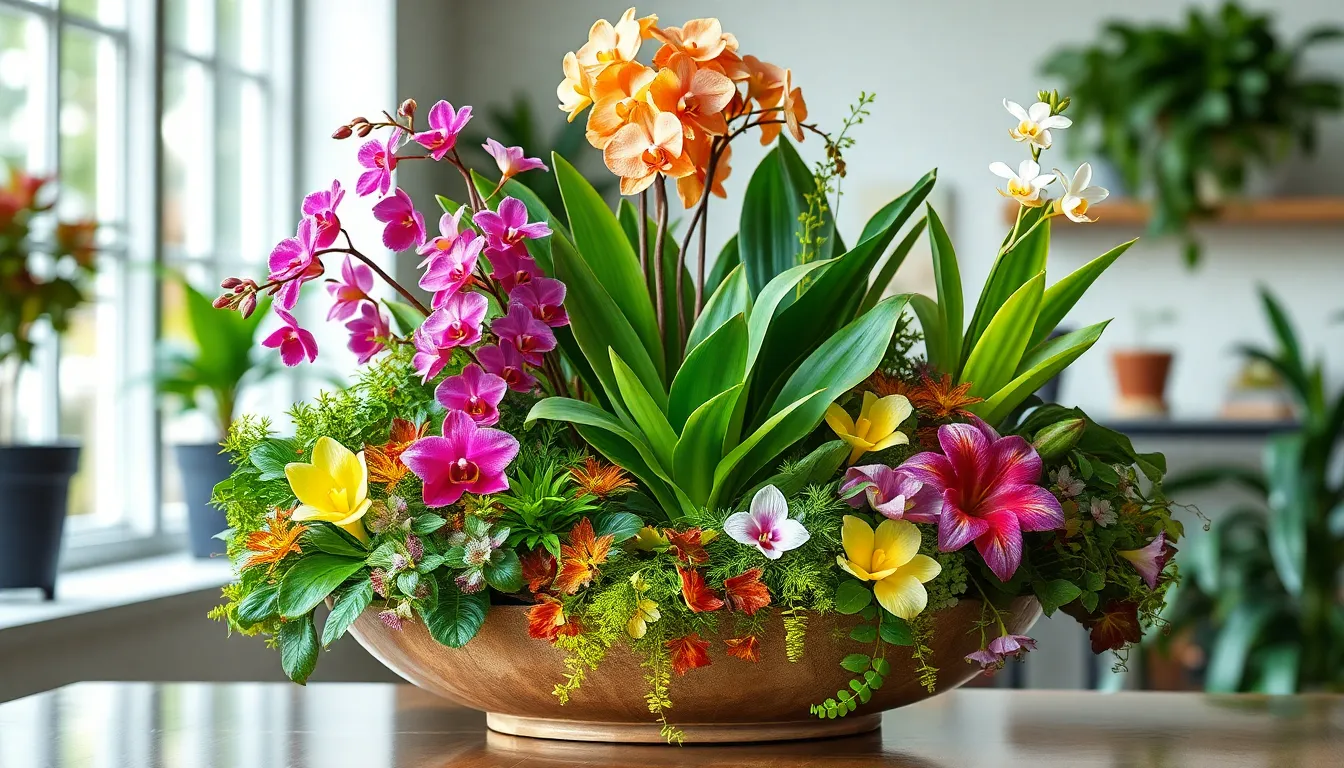
Creating dish gardens that celebrate each season ensures we enjoy vibrant displays throughout the year. Seasonal plant selections allow us to embrace nature’s changing rhythms while maintaining beautiful indoor gardens.
Spring and Summer Plant Combinations
Flowering plants paired with lush foliage create the most ever-changing spring and summer displays. We recommend combining colorful blooms like orchids, kalanchoe, and cyclamen with varied foliage plants that differ in height, texture, and leaf shape for maximum visual impact.
Applying the “Thrillers, Fillers, and Spillers” method transforms ordinary arrangements into professional looking gardens. Position a tall thriller plant in the center, surround it with medium height fillers, and add trailing spillers that cascade over container edges for balanced composition.
Tropical miniature forests bring exotic summer vibes indoors with careful plant selection. False aralia provides architectural height while rex begonias contribute bold foliage patterns, and purple trailing inch plants add cascading color for lively summer atmosphere.
Mixing heights and textures creates organic visual flow in warm season arrangements. Vary plant sizes from tall background specimens to low growing ground covers, ensuring each plant’s unique characteristics complement rather than compete with neighboring species.
Fall and Winter Indoor Garden Options
Bringing seasonal color indoors during cooler months requires plants that thrive in indoor conditions. Hellebores, erica heather, and primrose provide late winter blooms while adapting well to container garden environments for both outdoor and indoor display options.
Evergreen houseplants brighten homes throughout winter months with consistent foliage beauty. Aglaonema, dieffenbachia, and neanthe bella palms offer tropical appeal, while spathiphyllum peace lilies provide occasional white blooms during darker months.
Low maintenance winter selections ensure gardens remain attractive with minimal care requirements. Peperomia varieties, snake plants, and jade plants tolerate lower light conditions and infrequent watering schedules typical of winter indoor environments.
Ferns add soft texture and natural woodland appeal to cold season arrangements. Various fern species create lush backgrounds while requiring only consistent moisture and indirect light to maintain their vibrant green coloration throughout winter.
Troubleshooting Common Dish Garden Problems
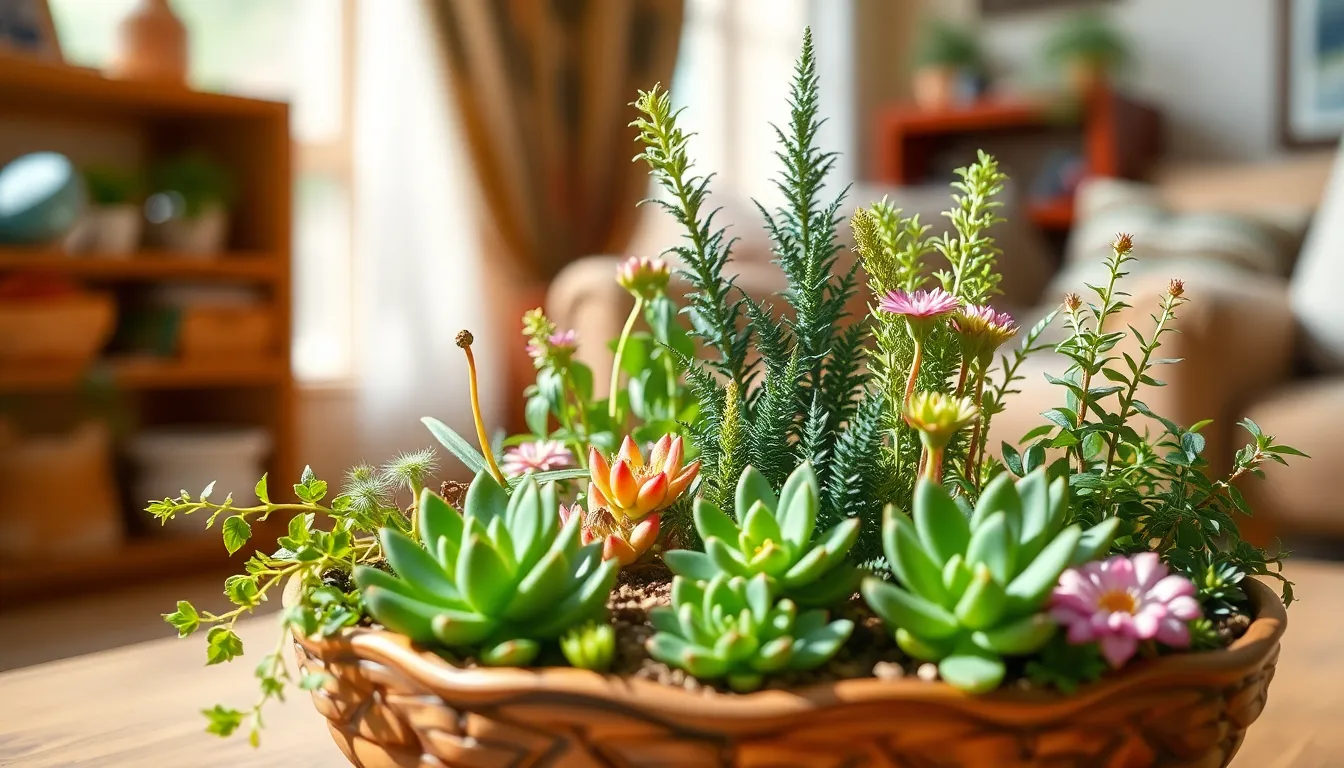
Even the most carefully planned dish gardens can face challenges that require our attention and quick action. We’ll help you identify these issues early and provide effective answers to keep your miniature landscapes thriving.
Identifying and Treating Plant Health Issues
Overwatering presents itself as the most common problem we encounter in dish gardens, especially since many containers lack proper drainage holes. Soggy soil creates the perfect conditions for root rot, which we can identify by yellowing leaves, musty odors, and soft, darkened stems. We recommend removing affected plants immediately and allowing the soil to dry completely between waterings.
Root rot develops when we water too frequently or when water sits stagnant in the container. Carefully remove plants showing signs of distress and examine their root systems for black, mushy roots. We trim away damaged roots with clean scissors and replant in fresh, well-draining soil.
Pest infestations appear as small insects, webbing, or sticky honeydew on leaves. Common culprits include spider mites, aphids, and scale insects that we can treat with insecticidal soap or neem oil applications. We isolate affected plants immediately to prevent spread to healthy specimens.
Disease symptoms manifest as discolored or spotted leaves, wilting even though adequate moisture, and unusual growth patterns. Fungal issues often stem from excessive moisture, so we improve air circulation and reduce watering frequency. We remove damaged foliage promptly and apply fungicide treatments when necessary.
Nutrient deficiencies show up as pale, yellowing leaves or stunted growth that we can address with diluted liquid fertilizer applied once in spring. We avoid fertilizing during fall and winter when plants enter dormancy periods.
Adjusting Light and Water Requirements
Light assessment starts with observing our plants for signs of improper exposure. Too much direct sunlight scorches leaves, creating brown, crispy edges, while insufficient light causes weak, leggy growth and dull colors. We provide bright, indirect sunlight and rotate our dish gardens regularly for even light distribution.
Temperature stability matters more than we might realize, so we keep our gardens away from drafts, heating vents, and air conditioning units. Most dish garden plants thrive in consistent temperatures between 65-75°F, which we maintain by choosing stable indoor locations.
Watering frequency requires adjustment based on soil dryness and plant response rather than following rigid schedules. We start with twice-weekly watering and modify based on how quickly the soil dries and how our plants respond. Smaller dish gardens typically need less than one cup of water weekly.
Watering technique involves using containers with thin spouts to target individual plant root zones rather than saturating the entire soil surface. We water slowly and allow excess moisture to drain completely, checking that drainage holes remain clear of debris.
Seasonal adjustments become necessary as daylight hours and indoor humidity levels change throughout the year. During winter months, we reduce watering frequency and avoid fertilizing, while summer conditions may require more frequent moisture checks and occasional misting for humidity-loving plants.
Creative Container Ideas Beyond Traditional Dishes
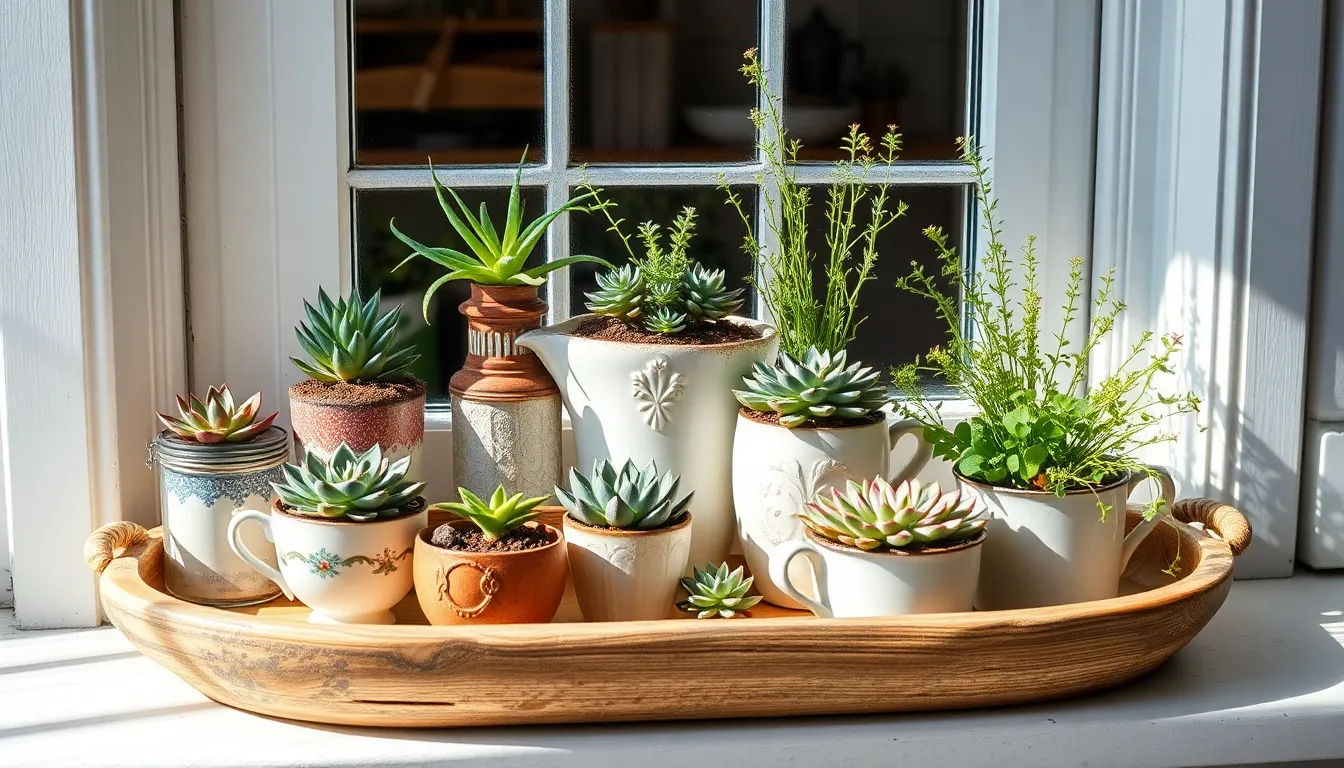
While shallow ceramic dishes remain classic choices, exploring unconventional container options opens endless possibilities for creating truly unique dish garden displays. We can transform everyday items into stunning plant showcases that reflect our personal style and creativity.
Repurposing Household Items for Unique Displays
Teacups make charming miniature planters for single succulents or small herb arrangements, adding vintage appeal to kitchen windowsills. Old serving bowls provide generous space for multi-plant arrangements while maintaining the shallow depth needed for healthy root systems. Vintage trays work beautifully for creating linear arrangements that can grace coffee tables or dining room centerpieces.
Drawer-like containers offer unique rectangular shapes that accommodate creative plant layouts and interesting geometric designs. We’ve found that repurposing these everyday objects not only promotes sustainability but also creates conversation pieces that blend seamlessly with our living spaces. Storage tins, decorative boxes, and even worn-out colanders can become extraordinary plant vessels with proper preparation.
Ensuring these repurposed containers have adequate moisture control remains essential for plant health. We recommend either creating drainage holes in suitable materials or using the double-potting method, where plants remain in their grow pots for easy removal and watering. This approach prevents mess while maintaining the aesthetic appeal of our chosen containers.
Choosing Containers That Match Your Home Decor
Container selection should harmonize with our interior design themes to create cohesive, visually pleasing displays throughout our homes. Modern interiors benefit from sleek ceramic dishes or glass containers that complement minimalist aesthetics and clean lines. These materials reflect light beautifully and maintain the uncluttered feel that contemporary spaces require.
Rustic or vintage decor pairs perfectly with repurposed wooden trays, distressed metal containers, or aged terracotta vessels that add character and warmth. Farmhouse styles welcome galvanized containers, weathered baskets, and mason jars that reinforce the cozy, lived-in atmosphere. Natural stone containers and unglazed clay pots enhance earthy, organic interiors by introducing textural elements that connect indoor spaces with nature.
Color coordination plays a crucial role in achieving design harmony. We select container hues that either complement our existing color palette or provide strategic accent colors that tie rooms together. Neutral containers in whites, grays, and earth tones offer versatility and allow our plants to take center stage, while bold-colored vessels can serve as statement pieces that anchor our decorative schemes.
Advanced Techniques for Stunning Visual Impact
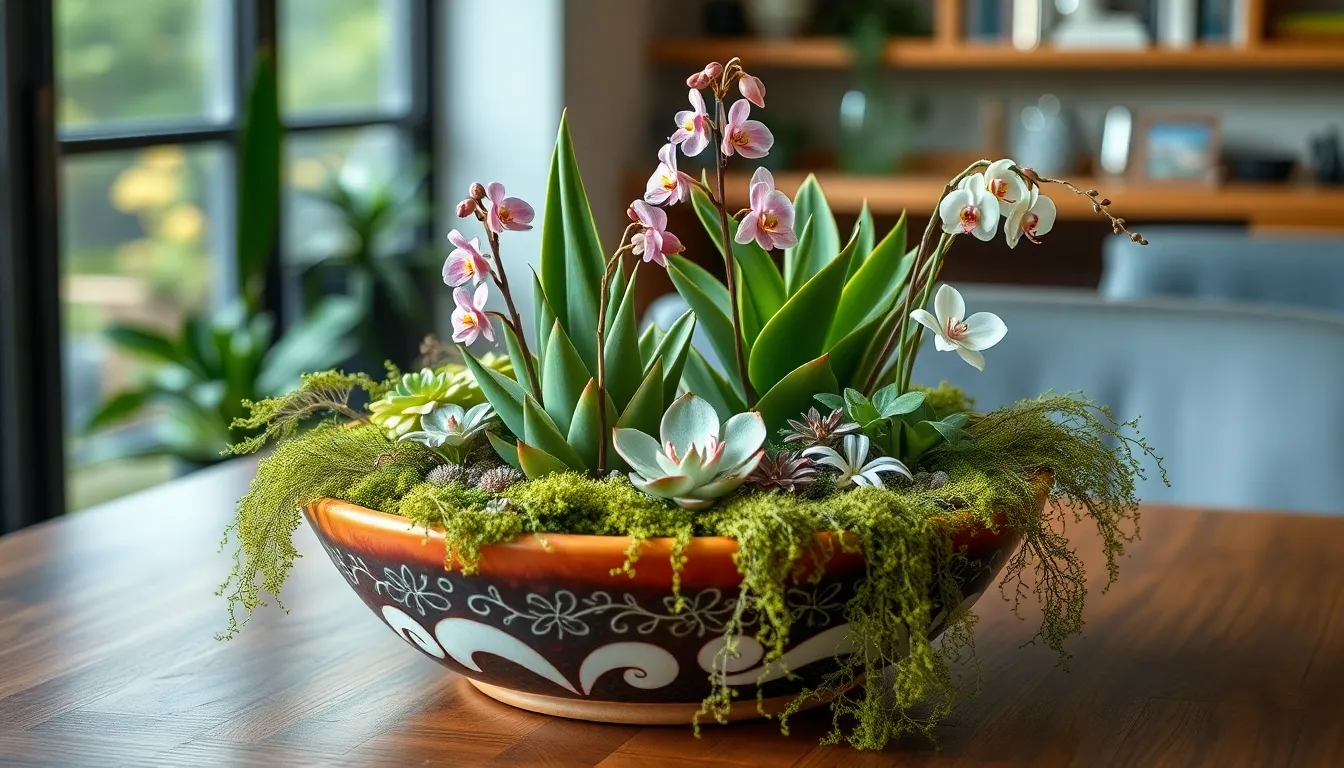
Elevating your dish garden from basic to breathtaking requires strategic design principles that maximize visual appeal within confined spaces. We’ll explore professional techniques that transform simple plant arrangements into stunning miniature landscapes.
Creating Height and Depth in Small Spaces
Arranging plants by scale creates the illusion of depth in shallow containers through strategic positioning. We place taller plants in the center or back of our dish gardens while surrounding them with smaller specimens that gradually decrease in height toward the front edges.
Using the “Thriller, Filler, Spiller” method transforms flat arrangements into ever-changing three dimensional displays. We position a tall, eye catching “Thriller” plant as our focal point, surround it with medium height “Filler” plants for substance, and finish with trailing “Spiller” plants that cascade over container edges.
Layering foliage plants of varying sizes and shapes builds vertical interest without overwhelming limited space. We cluster low spreading plants like mosses or creeping succulents near the front edges while anchoring our arrangements with taller specimens that provide vertical structure.
Creating visual depth relies on proportion and placement rather than actual container depth. We achieve this by positioning plants with larger leaves toward the back and smaller, more delicate foliage in front, mimicking how our eyes naturally perceive distance in full sized landscapes.
Color Coordination and Plant Placement Strategies
Balancing flowering plants with foliage creates vibrant yet harmonious color schemes throughout our dish gardens. We combine blooming specimens like orchids, kalanchoe, or cyclamen with textured green plants to add color pops while maintaining visual calm.
Coordinating plant colors using complementary or analogous color schemes ensures cohesive arrangements that please the eye. We distribute colors strategically across our dish gardens to balance visual weight and prevent any single area from overwhelming the overall composition.
Considering moisture needs during plant placement enables successful mixed plant groupings without compromising individual care requirements. We either plant directly in potting mix for permanent setups or arrange plants in their nursery pots within larger containers for flexibility and easier maintenance.
Incorporating decorative elements like miniature ornaments, stones, or figurines enhances our aesthetic while creating focal points within the miniature industry. We use these accessories sparingly to complement rather than compete with our plant selections, ensuring they enhance the overall visual impact.
Conclusion
We’ve explored the endless possibilities that dish gardens offer for bringing nature indoors and creating stunning miniature landscapes. Whether you’re drawn to desert scenes with drought-tolerant succulents or prefer the lush appeal of woodland-inspired arrangements these compact gardens provide year-round beauty without requiring extensive outdoor space.
The key to success lies in understanding your plants’ needs and applying thoughtful design principles. From proper drainage techniques to seasonal adaptations we’ve covered the essential knowledge needed to maintain thriving dish gardens that enhance your home’s aesthetic appeal.
With the right plant combinations decorative elements and care practices you’ll create captivating displays that serve as both conversation pieces and therapeutic gardening outlets. Start with simple arrangements and gradually experiment with advanced techniques as your confidence grows.
Frequently Asked Questions
What is a dish garden?
A dish garden is a miniature landscape created in a shallow container that brings outdoor beauty indoors. These contained ecosystems allow you to enjoy gardening year-round, regardless of space limitations or weather conditions. They combine various plants with decorative elements to create beautiful, therapeutic displays that enhance home décor.
Do I need gardening experience to create a dish garden?
No, dish gardens are perfect for beginners! They don’t require extensive gardening knowledge or experience. With basic understanding of plant care requirements and the right plant combinations, anyone can create beautiful miniature landscapes. Start with low-maintenance plants like succulents for the easiest success.
What container should I use for my dish garden?
Choose containers based on drainage capacity, size, material, and shape. Ensure proper drainage holes to prevent waterlogging. Select a size that accommodates your chosen plants with room for growth. Materials like ceramic, terracotta, or plastic work well, while the shape should complement your design vision and available space.
Which plants work best in dish gardens?
Select plants with similar care requirements that complement each other visually. Popular choices include low-maintenance succulents, lush tropical plants like false aralia and rex begonias, air plants for vertical interest, and small flowering plants like pansies and petunias. Always group plants with matching light and water needs.
How do I prevent overwatering in dish gardens?
Create proper drainage with a foundation layer of rocks or horticultural charcoal. Use quality potting mix appropriate for your plants. Monitor soil moisture levels regularly and water only when the top inch feels dry. Ensure drainage holes remain clear and never let plants sit in standing water.
Can I create themed dish gardens?
Absolutely! Popular themes include desert gardens with cacti and drought-tolerant plants, woodland scenes featuring moss and ferns, and whimsical fairy tale gardens with miniature accessories. Use plants and decorative elements that match your chosen theme while ensuring all plants have compatible care requirements.
How do I maintain my dish garden throughout the seasons?
Adjust care based on seasonal changes and plant needs. Refresh soil annually, monitor light requirements as seasons change, and adapt watering schedules accordingly. For year-round interest, choose seasonal plant combinations or incorporate evergreen houseplants that thrive in lower light during winter months.
What tools do I need to create a dish garden?
Essential tools include small hand trowels for planting, quality potting mix suited to your plants, drainage materials like pebbles or charcoal, and decorative elements such as stones, sand, or miniature accessories. These basic supplies will help you create and maintain beautiful dish garden displays.

